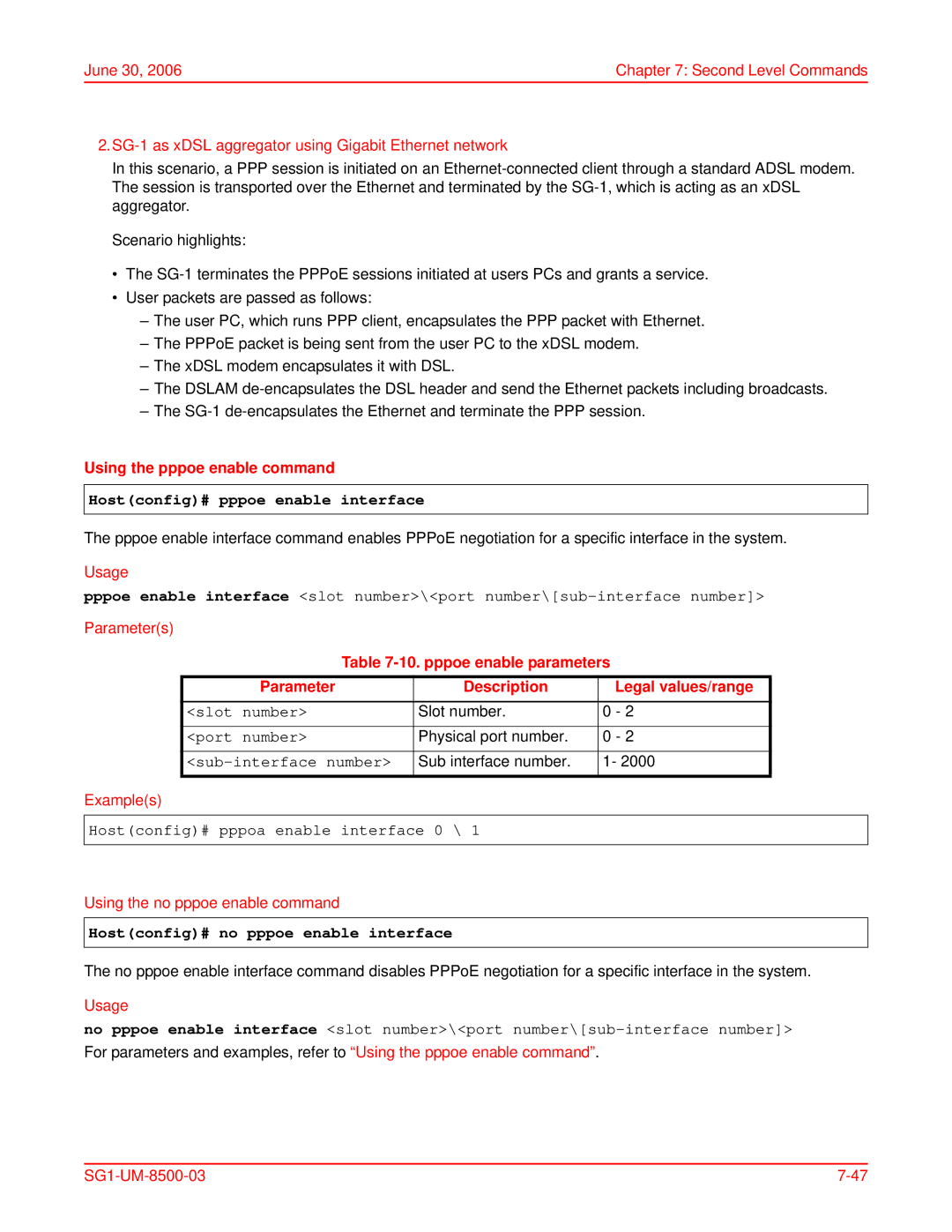
June 30, 2006 | Chapter 7: Second Level Commands |
In this scenario, a PPP session is initiated on an
Scenario highlights:
•The
•User packets are passed as follows:
–The user PC, which runs PPP client, encapsulates the PPP packet with Ethernet.
–The PPPoE packet is being sent from the user PC to the xDSL modem.
–The xDSL modem encapsulates it with DSL.
–The DSLAM
–The
Using the pppoe enable command
Host(config)# pppoe enable interface
The pppoe enable interface command enables PPPoE negotiation for a specific interface in the system.
Usage
pppoe enable interface <slot number>\<port
Parameter(s)
Table
| Parameter | Description | Legal values/range |
<slot | number> | Slot number. | 0 - 2 |
<port | number> | Physical port number. | 0 - 2 |
Sub interface number. | 1- 2000 | ||
Example(s)
Host(config)# pppoa enable interface 0 \ 1
Using the no pppoe enable command
Host(config)# no pppoe enable interface
The no pppoe enable interface command disables PPPoE negotiation for a specific interface in the system. Usage
no pppoe enable interface <slot number>\<port
For parameters and examples, refer to “Using the pppoe enable command”.
|
